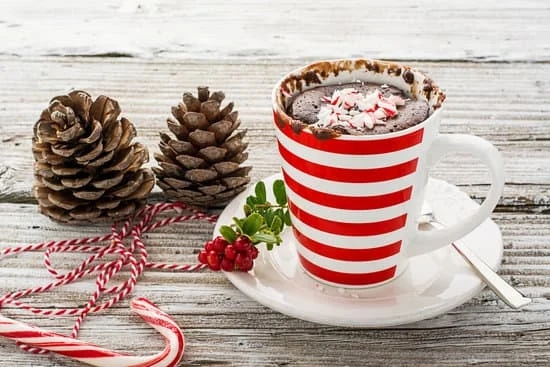Cake decorating with fruit is a delightful and refreshing way to add color, flavor, and natural beauty to your baked creations. Whether you’re a novice baker or a seasoned pastry chef, incorporating fresh fruits into your cake decorations can elevate your desserts to new heights. In this guide, we will explore the art of cake decorating with fruit, from choosing the right fruits to preparing stunning decorations that will impress your guests and tantalize their taste buds.
When it comes to cake decorating with fruit, the options are endless. From vibrant berries to tropical fruits like mangoes and kiwis, each fruit brings its unique characteristics in terms of color, texture, and flavor.
Understanding how to choose the right fruits for your specific design or recipe is crucial for achieving harmonious and visually appealing results. Whether you’re aiming for a bright and colorful summer theme or a more elegant and sophisticated look, selecting the perfect fruits is key.
In the following sections, we will delve into essential techniques for slicing, dicing, and arranging fruit decorations on cakes with precision and finesse. Additionally, we will explore innovative ways to incorporate fresh fruit into cake batter or frosting for added moisture and flavor.
Get ready to unleash your creativity as we uncover creative ideas for fruit-infused cake recipes that range from tangy citrus zest to decadent berry compotes. Prepare to be inspired by the top trends in cake decorating with fruit that are gracing social media feeds worldwide.
The Art of Choosing the Right Fruits for Cake Decorating
When it comes to cake decorating with fruit, choosing the right fruits is essential to creating a visually appealing and delicious masterpiece. The art of selecting fruits for cake decoration involves considering color, texture, and flavor to enhance the overall design and taste of the cake. Color plays a significant role in making your cake visually appealing.
Vibrant colored fruits such as strawberries, blueberries, passion fruit, or kiwi can add a pop of color that makes your cake stand out. On the other hand, if you’re aiming for a more monochromatic look, consider using fruits in varying shades of one color, such as different tones of red in raspberries and pomegranate seeds.
Texture is another crucial factor to consider when choosing fruits for cake decorating. The texture of the fruit should complement the texture of the cake itself. For example, juicy fruits like peaches or mangoes work well with soft cakes like sponge cakes or chiffon cakes.
On the other hand, crunchy fruits like apples or pears can provide a delightful contrast when paired with creamy frostings or dense cakes like pound cakes. It’s essential to think about how the texture of the fruit will interact with the other components of the cake to create a harmonious balance.
Flavor is perhaps the most important consideration when choosing fruits for cake decorating. The flavors should complement each other rather than overpowering one another. Consider pairing sweet fruits like berries or citrus with rich chocolate cakes for a delightful combination of flavors.
You can also experiment with exotic fruits like lychee or guava to add an unexpected twist to classic cake recipes. By carefully selecting fruits based on their color, texture, and flavor profiles, you can elevate your cake decorating skills and create stunning masterpieces that not only look beautiful but also taste delicious.
| Aspect | Considerations |
|---|---|
| Color | Choose vibrant colors for visual appeal or monochromatic tones for a specific look. |
| Texture | Pair juicy fruits with soft cakes and crunchy fruits with creamy frostings or dense cakes. |
| Flavor | Ensure that the flavors of the chosen fruits complement each other and enhance the overall taste of the cake. |
Preparing Your Fruit Decorations
When it comes to cake decorating with fruit, the way you prepare your fruits can make a significant difference in the overall presentation and taste of your creation. Slicing, dicing, and arranging fruits on a cake may seem simple, but there are techniques that can elevate your design to another level. One essential factor to consider is the size and thickness of the fruit slices – uniformity is key for a visually appealing outcome.
Slicing Techniques
For most cakes, thin slices are preferred as they are easier to bite into and distribute evenly across each slice. Use a sharp knife or a mandoline slicer for consistent thickness. When slicing berries, try cutting them in halves or quarters depending on their size to showcase their vibrant colors. For larger fruits like kiwi or mango, peel them first before slicing to remove any unwanted texture.
Dicing Tips
Diced fruit can add interesting textures and flavors to your cake decorations. When dicing fruits like pineapple or melon, aim for cubes of similar sizes to maintain visual appeal. Citrus fruits such as oranges or lemons can be segmented into smaller pieces for a burst of freshness in each bite. Remember that finely diced fruits work best as garnishes while larger chunks are perfect for filling spaces between layers.
Arranging Artfully
Once you have mastered the slicing and dicing techniques, it’s time to get creative with arranging the fruit on your cake. Consider the color contrast between different fruits and use varied shapes to create an eye-catching design. Start from the center of the cake and work your way outwards for a balanced look.
Don’t be afraid to overlap slices or layer fruits on top of each other for added dimension. Remember, practice makes perfect when it comes to creating stunning fruit decorations on your cakes.
Best Practices for Incorporating Fresh Fruit Into Cake Batter or Frosting
Fresh fruit adds a delightful burst of flavor and natural sweetness to cakes, making them even more irresistible. Incorporating fresh fruit into cake batter or frosting requires some care and consideration to ensure the perfect balance of flavors and textures. One of the key best practices is to choose fruits that are in season for optimal freshness and taste. Seasonal fruits not only taste better but also have a more vibrant color that can enhance the appearance of your cake.
When adding fresh fruit to cake batter, it’s essential to prepare the fruits properly. Ensure that the fruits are washed, peeled (if necessary), and diced to the right size before incorporating them into the batter. Larger chunks of fruit may sink to the bottom of the cake during baking, so make sure they are evenly distributed for a consistent distribution throughout the cake.
If you’re using fresh fruit in frosting or icing, consider pureeing the fruit first to achieve a smoother texture and avoid any unwanted chunks in your frosting. You can also add a touch of lemon juice to prevent browning if using fruits like apples or pears. The acidity not only helps preserve the color but also adds a bright flavor that complements the sweetness of the frosting.
| Benefits | Tips |
|---|---|
| Enhances flavor | Choose seasonal fruits |
| Adds natural sweetness | Prepare fruits properly |
| Colorful presentation | Puree fruits for smooth texture |
Creative Ideas for Fruit-Infused Cake Recipes
When it comes to incorporating fruit into cake recipes, the options are truly endless. Whether you’re looking to add a burst of freshness with citrus zest or create a decadent berry compote filling, there are so many creative ideas to explore. Here are some delicious fruit-infused cake recipes that are sure to elevate your baking game:
- Lemon Blueberry Cake: The combination of zesty lemon and juicy blueberries creates a refreshing and light cake perfect for summer gatherings. Add in some lemon zest to the batter for a bright citrus flavor that complements the sweet blueberries beautifully.
- Strawberry Shortcake Cake: For a classic dessert with a twist, try making a strawberry shortcake cake. Layer vanilla sponge cake with fresh strawberries and whipped cream for a delightful treat that’s perfect for any occasion.
- Orange Almond Cake: Infuse your cake batter with orange zest and almond extract for a fragrant and nutty flavor profile. Top the cake with sliced almonds and fresh orange segments for an elegant presentation.
These fruit-infused cake recipes not only add vibrant colors and flavors to your creations but also showcase the natural sweetness of the fruit. Experimenting with different combinations and techniques can help you discover new favorite flavor pairings that will impress anyone who takes a bite of your creations.
Incorporating fruit into cakes not only enhances their taste but also adds nutritional value and eye-catching appeal. So next time you’re in the kitchen, consider experimenting with these creative ideas for fruit-infused cakes to elevate your baking skills and impress your friends and family with stunning desserts that not only taste amazing but look fantastic too.
Top Trends in Cake Decorating With Fruit
Cake decorating with fruit has taken the baking world by storm, with enthusiasts and professionals alike embracing the vibrant colors, fresh flavors, and natural beauty that fruit can add to cakes. In today’s age of social media and visual storytelling, cake decorators are constantly seeking out new trends and inspirations to create Instagram-worthy designs that not only taste delicious but also look stunning.
From minimalist elegance to elaborate fruit cascades, let’s explore some of the top trends in cake decorating with fruit that are captivating audiences worldwide.
To achieve a visually striking cake decoration with fruit, consider incorporating edible flowers like pansies, violets, or nasturtiums for a pop of color and delicate petals. These blooms not only add a touch of elegance but also provide unique shapes and textures that can elevate your cake design. Arrange these edible flowers alongside slices of fresh fruits like strawberries, kiwis, or peaches for a harmonious blend of natural elements on your cake.
For those looking to make a bold statement with their cake decorating skills, consider exploring modern geometric patterns using sliced fruits like oranges or grapefruits. By strategically placing these citrus slices in angular arrangements or concentric circles, you can create visually stunning designs that are sure to impress. Experiment with different fruit sizes and colors to achieve contrast and balance in your geometric fruit decorations.
Another popular trend in cake decorating with fruit is the use of tropical fruits like mangoes, pineapples, or passion fruits to add a splash of exotic flair to your creations. Incorporate layers of tropical fruit purees between cake layers for a burst of flavor or adorn your cake with carved fruit shapes that evoke visions of paradise.
Whether you’re aiming for a beach-themed wedding cake or a refreshing summer dessert, tropical fruits offer endless possibilities for creative expression in cake decoration.
With these top trends in mind, you can infuse your cake decorating with fruit with creativity, innovation, and personality. Let your imagination run wild as you experiment with different textures, flavors, and arrangements to create Instagram-worthy designs that will leave everyone amazed at your skills in combining the artistry of baking with the freshness of nature.
Embrace the beauty and flavor that come from decorating cakes with fresh fruit, making each creation a delectable feast for both the eyes and the taste buds.
Troubleshooting Common Issues When Decorating Cakes With Fruit
Preventing Soggy Bottoms
One common issue when decorating cakes with fruit is the dreaded soggy bottom. The excess moisture from fresh fruits can seep into the cake layers, causing them to become mushy and lose their structural integrity. To prevent this, it’s essential to properly prepare your fruits before placing them on the cake.
Make sure to pat them dry with a paper towel to remove any excess moisture. You can also sprinkle a thin layer of cornstarch or powdered sugar on the fruit slices to absorb any residual liquid.
Avoiding Wilting Fruits
Another challenge that many bakers face when decorating cakes with fruit is the wilting of delicate fruits like berries and kiwis. To avoid this issue, it’s important to add the fruit decorations at the last minute, right before serving the cake.
This will help keep the fruits fresh and vibrant, preventing them from wilting prematurely. If you need to prepare your cake in advance, store it in the refrigerator but be aware that some fruits may still wilt over time.
Stabilizing Fruit Decorations
To ensure that your fruit decorations stay in place and don’t slide off the cake, consider using a thin layer of frosting as “glue” between the fruit slices and the cake surface. This will help anchor the fruits in place while also adding an extra layer of flavor and sweetness to each bite.
Additionally, you can strategically place larger pieces of fruit or berries around the edges of the cake where they are less likely to shift or slide during transport or display.
By following these troubleshooting tips and techniques, you can prevent soggy bottoms, wilting fruits, and other common issues when decorating cakes with fruit. With a little extra care and attention to detail, you can create stunning and delicious fruit-adorned cakes that will impress your guests and leave them coming back for more.
Expert Tips and Tricks for Professional-Quality Fruit Decorations
Cake decorating with fruit can elevate a simple cake into a stunning masterpiece that not only looks beautiful but also tastes delicious. To achieve professional-quality fruit decorations, there are some expert tips and tricks that can take your creations to the next level.
One key tip is to select fruits that are in season as they will be at their peak flavor and freshness, enhancing the overall taste of the cake. Additionally, consider the color contrast and texture of the fruits to create visual interest and depth in your decoration.
When it comes to garnishing cakes with fruit, precision is key. Make sure to finely slice or dice the fruits uniformly for a polished look. Experiment with different shapes such as wedges, curls, or even intricate designs like rosettes for a more intricate finish. Layering different fruits strategically can add dimension and complexity to your decoration, creating a visually appealing arrangement that is sure to impress.
For those looking to create show-stopping centerpieces using fruit on their cakes, consider using larger pieces like whole berries, citrus slices, or even edible flowers. These eye-catching elements can serve as focal points and add a touch of elegance to your cake design.
Remember that less is often more when it comes to decorating with fruit – choose a few statement pieces rather than overcrowding the cake with too many toppings for a more refined look. By incorporating these expert tips and tricks into your cake decorating process, you can achieve professional-quality fruit decorations that are both visually striking and irresistibly tasty.
Conclusion
In conclusion, cake decorating with fruit adds not only a pop of color but also a burst of natural flavor to your sweet creations. By carefully selecting the right fruits based on their color, texture, and taste, you can elevate the aesthetic appeal of your cakes while also enhancing their overall taste profile. From vibrant citrus slices to juicy berry compotes, the possibilities for fruit-infused cake designs are truly endless.
Furthermore, incorporating fresh fruit into cake batter or frosting can introduce a refreshing twist to classic recipes and provide a healthier alternative to artificial food coloring or flavoring. By mastering techniques such as slicing, dicing, and arranging fruits as decorations, you can turn any ordinary cake into a masterpiece that is not only visually stunning but also delectably delicious.
Overall, with the top trends in cake decorating with fruit emphasizing Instagram-worthy designs and inspirations, there is no better time to experiment with your creativity in the kitchen. Remember to keep in mind expert tips and tricks for professional-quality fruit decorations, from garnishes to centerpieces, to ensure that your final product not only looks beautiful but tastes divine.
So go ahead and explore the world of cake decorating with fruit – it’s a delightful journey that blends beauty and flavor in perfect harmony.
Frequently Asked Questions
How to Decorate Cake With Fruit Easy?
Decorating a cake with fruit can be easy and visually appealing. One simple way to do this is by arranging fresh fruit slices on top of the cake in an attractive pattern.
Another option is to create a fruit glaze or compote that can be drizzled over the cake for added flavor and decoration. Adding a few sprigs of mint or edible flowers can also enhance the overall presentation of the fruit-decorated cake.
What Fruit Is Good for Cake Decorating?
When it comes to decorating cakes with fruit, there are several options that work well. Berries such as strawberries, raspberries, blueberries, and blackberries are popular choices due to their vibrant colors and sweet flavors.
Sliced kiwi, mango, pineapple, and peaches can also add a tropical touch to cake decorations. Additionally, grapes, figs, pomegranate seeds, and citrus slices can bring a unique and sophisticated look to any cake.
How Do You Get Fruit to Stick to a Cake?
Getting fruit to stick to a cake requires some simple tricks. One method is to lightly brush the surface of the cake with a thin layer of warm apricot jam or jelly before placing the fruit on top. The sticky nature of the jam will help hold the fruit in place securely.
Alternatively, you can use whipped cream or frosting as “glue” to attach the fruit slices onto the cake. It’s important to gently press down on each piece of fruit after placing it on the cake to ensure it adheres properly.

Welcome to our cake decorating blog! My name is Destiny Flores, and I am the proud owner of a cake decorating business named Cake Karma. Our mission is to provide delicious, beautiful cakes for all occasions. We specialize in creating custom cakes that are tailored specifically to each customer’s individual needs and tastes.





